The Bay of Naples is home to some of Italy’s best-known island destinations, including glittering Capri and local favorite Ischia. In the shadow of these popular spots, there’s a third island tucked away in the bay between the mainland and Ischia which has often been overlooked – Procida! Just four square kilometers, this tiny island has black sand beaches, citrus groves, a rich seafaring culture, and a laid-back vibe, making it a perfect destination for escaping the masses but still enjoying the best parts of an island vacation.





What to See
Procida has been named the Italian Capital of Culture for 2022, the first island to receive the designation. Lacking the flashiness of some of the neighboring islands (and past Capitals of Culture), Procida’s allure is more subtle. The island has a rich history and culture, rooted in seafaring activities like fishing, and also hosts a well-known maritime academy. The colorful buildings of the main fishing port, Corricella, were originally painted their vibrant hues so fishermen could spot their homes from offshore. Much of this authentic way of life remains unchanged, which is part of the draw of the island. Its authenticity gives visitors a true glimpse of island life in Italy, and the slower pace of life makes it a place worth lingering.




Corricella is perhaps the most photographed spot on the island, and for good reason. The quaint port has appeared in movies like Il Postino and The Talented Mr. Ripley, but is still home to an active fishing fleet. Walking along the harbor you see a mix of locals working on their dinghies and visitors enjoying the al fresco dining options. We stayed right on the harbor, where we were able to watch the fishing boats go out each evening and see the locals swimming and sunning in a quiet part of the harbor during the day.


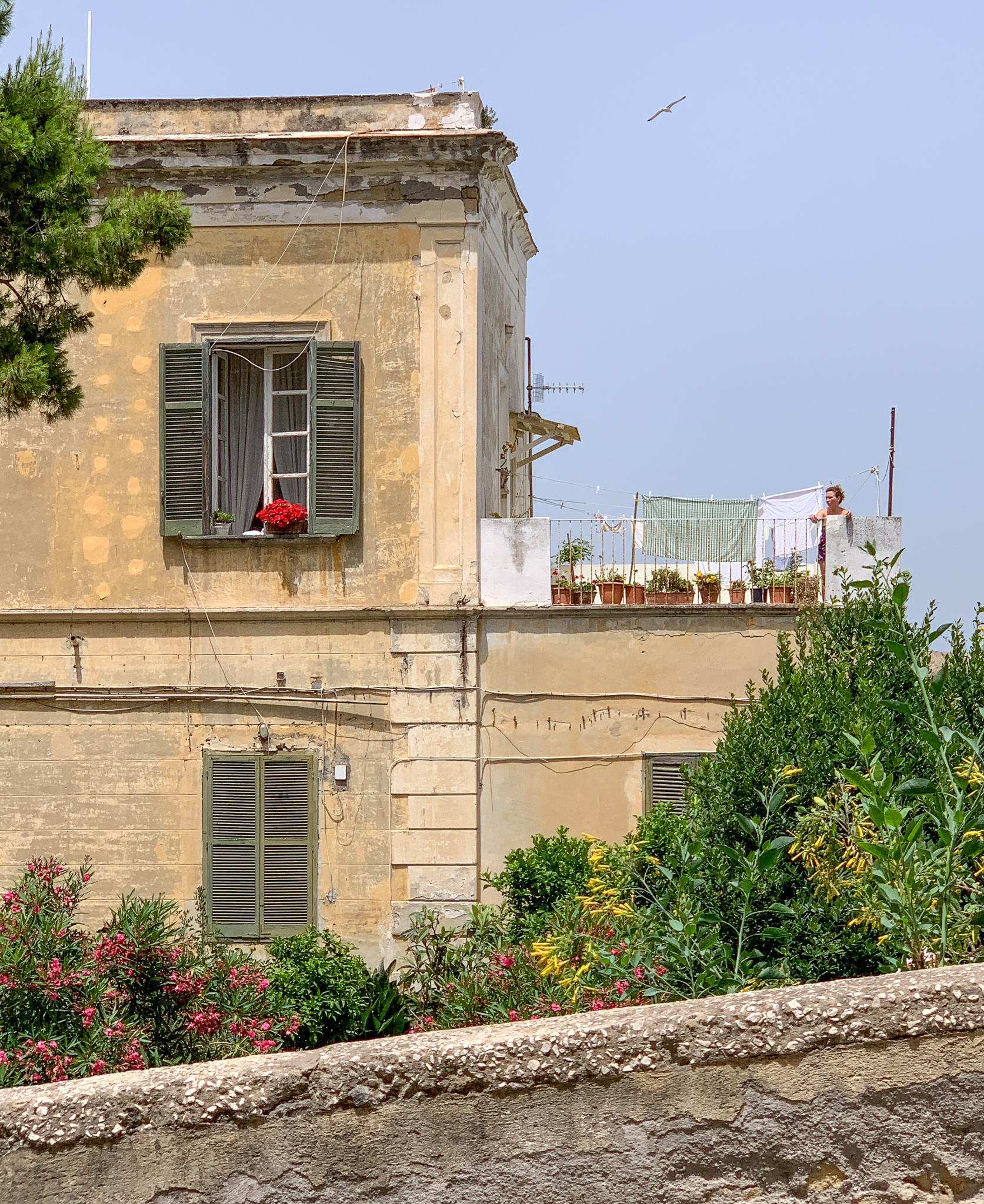


On a cliff above the port of Corricella is Terra Murrata, a medieval walled hamlet which is the oldest settlement on the island. Terra Murrata is dominated by Palazzo d’Avalos, built in 1500 as a stately Renaissance residence and converted to a prison in 1830. The site was actively used (including during WWII, when it housed anti-fascist resisters) until it was abandoned in 1988, but is now open occasionally for group tours. (It was, unfortunately, closed during the time of our visit.) Terra Murrata is also home to Abbazia San Michele Arcangelo, originally founded by the Benedictines in the 11th century, and more recently rebuilt in the 16th century. The church is, perhaps, unexpectedly ornate inside, a sign of its importance as the religious and cultural heart of Terra Murrata in earlier years. We visited the church on one of the guided tours where they explained the importance of many of the paintings and sculptures. The ornate nativity made from seashells was not the most historic feature in the church, but it was still impressive.
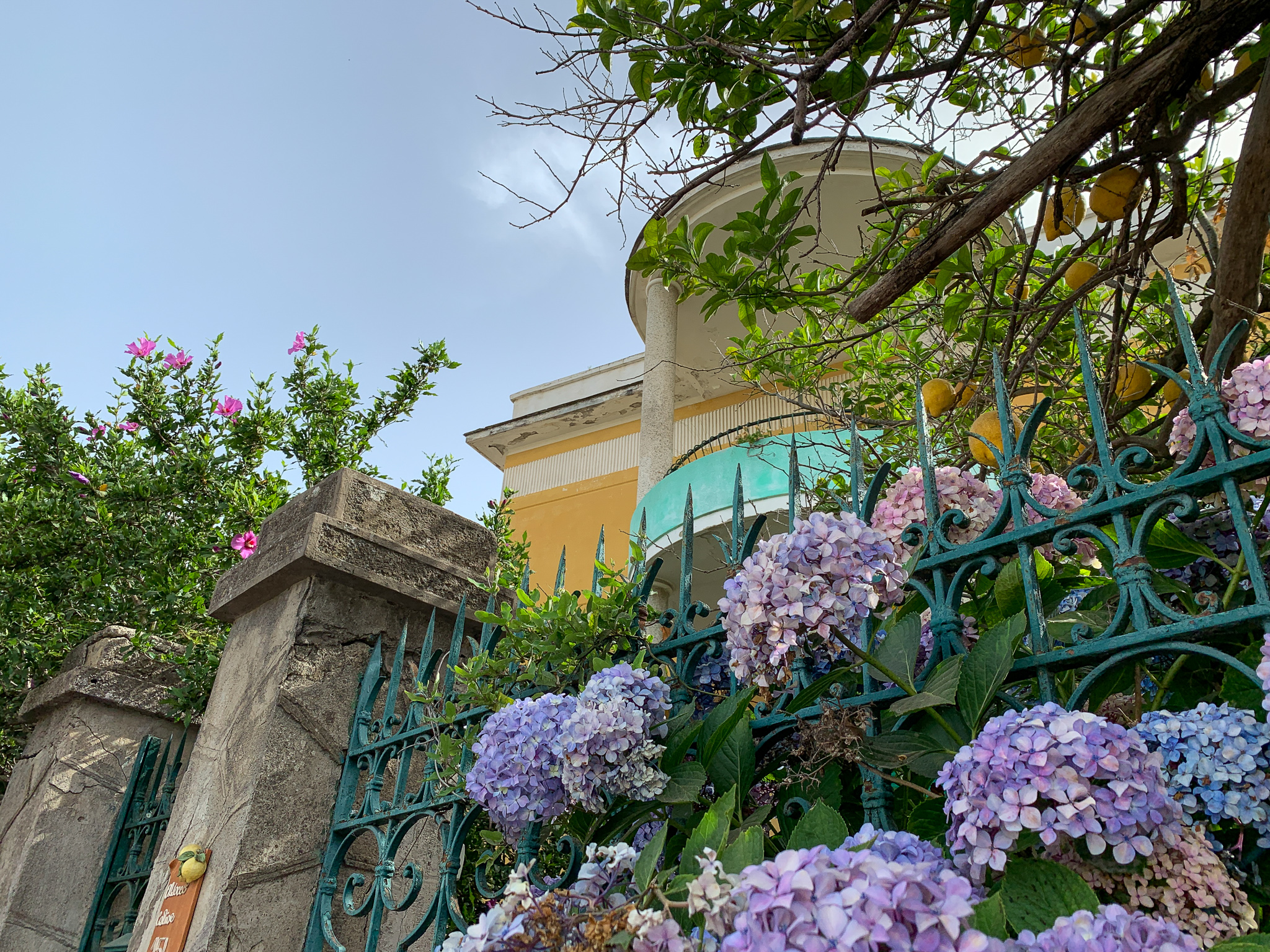


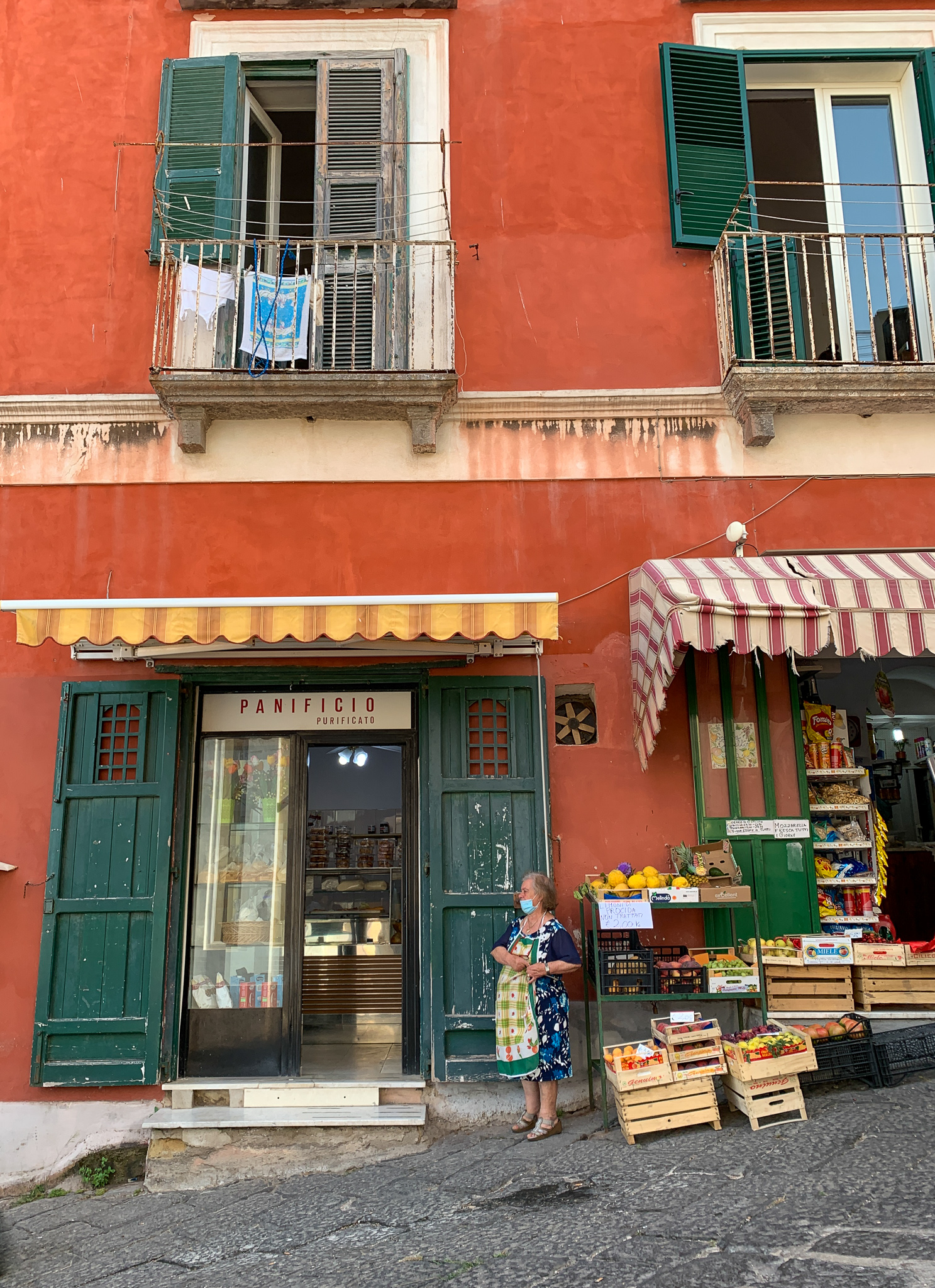

Although Corricella and Terra Murrata are both walkable from the ferry dock, we decided to rent e-bikes to explore the further corners of the island. You’ll find both locals and tourists alike zipping around on two wheels, and it is really one of the most convenient ways to get around. I should note, however, that the main roads are extremely narrow and it’s a tight squeeze (and a bit terrifying at times) sharing the roads with cars. Despite that, we did find it was the best way to reach some of the further beaches and hamlets on the island. We rented our bikes from General Rental across from where the ferry boats come into port.





On our bikes we set off for Chiaiolella beach, on the southern side of the island. Chiaiolella is also where you can access, via a small footbridge, the small islet and nature reserve of Vivara, which was unfortunately closed during the time of our visit. After a stop for a beachside lunch in Chiaiolella, we swung north to visit Cala del Pozzo Vecchio beach, then looped northward towards Punta di Pioppeto. The most enjoyable part of the bike excursion was being able to explore some of the smaller back roads, passing houses draped in colorful flowers and fields filled with lemons. We definitely made some wrong turns (easy to reverse course on the bikes) but had a lovely day of seeing what the south side of the island had to offer.

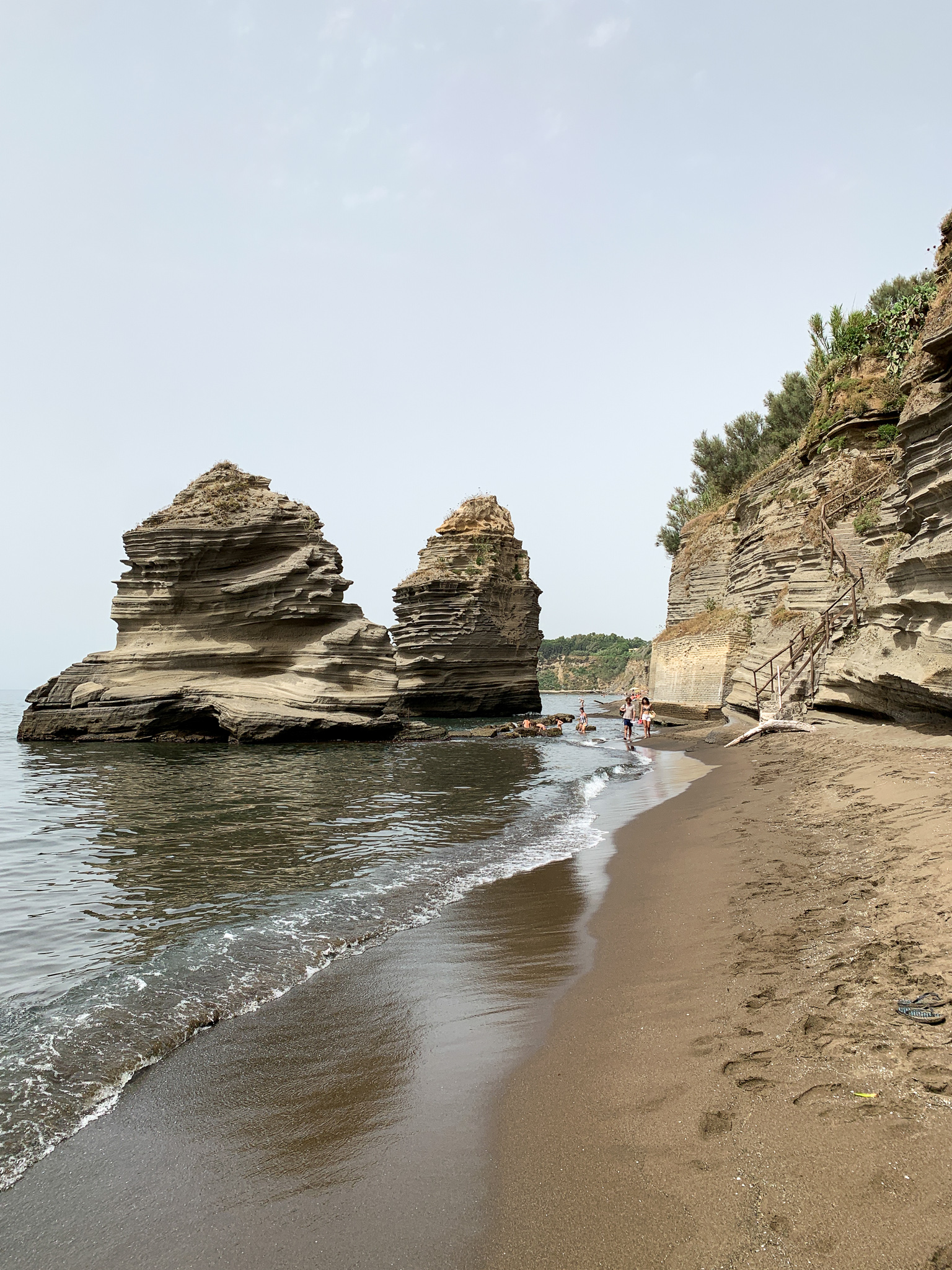
As an island destination, naturally many people come to Procida for the beaches. Our “local” beach while staying in Corricella was Chiaia, a 15 minute walk from Corricella port. We loved this little slice of black sand beach, with ample “free” beach space in addition to a small beach club. Since this beach is on the east side of the island tucked beneath a tall cliff it was nicely shaded in the afternoon. The black sand retained the day’s heat, yet we weren’t being baked in the sun – a perfect situation. Chiaiolella beach on the southwestern side of the island gets full sun and was super hot the day we visited – black sand and full sun, beware! It’s a beautiful beach, however, easily accessible and without a climb down a cliff to reach it. The Cala del Pozzo Vecchio beach is also on the west side of the island in full sun, a bit more sheltered by the cliffs, but still reachable by road.
Where to Eat
Procida’s cuisine naturally features a lot of seafood, but the other star of the show is a special variety of heirloom lemon which is grown all over the island. Much larger than traditional lemons, they are also much sweeter, so much so that whole lemons, peel and all, are featured in many dishes.
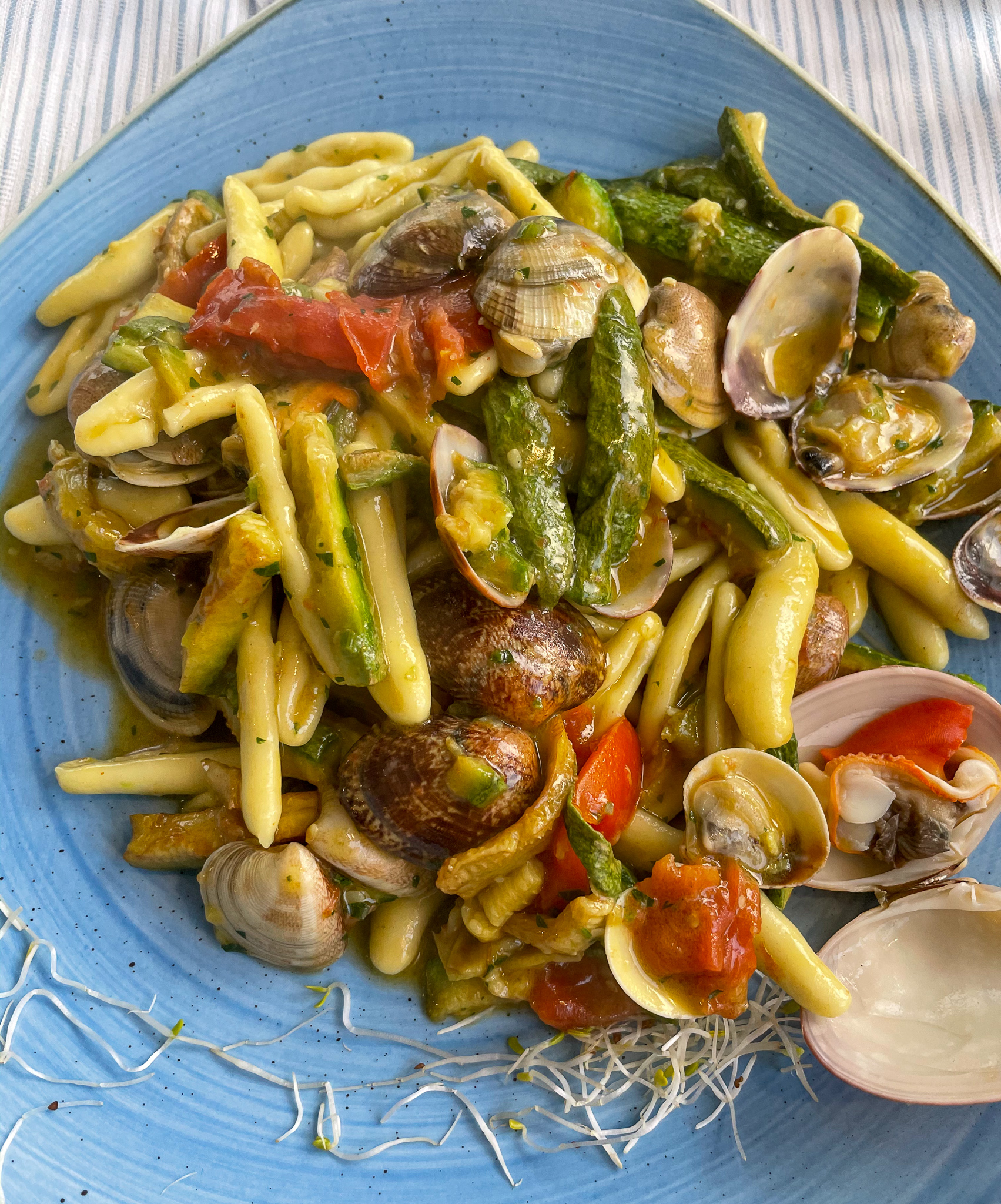

We had several excellent meals while we were on Procida. Dinner at La Lampara, with panoramic views over Coricella’s harbor, featured fresh local seafood and a lemony twist on a traditional tiramisu. A reservation was necessary for the tables with the best views.
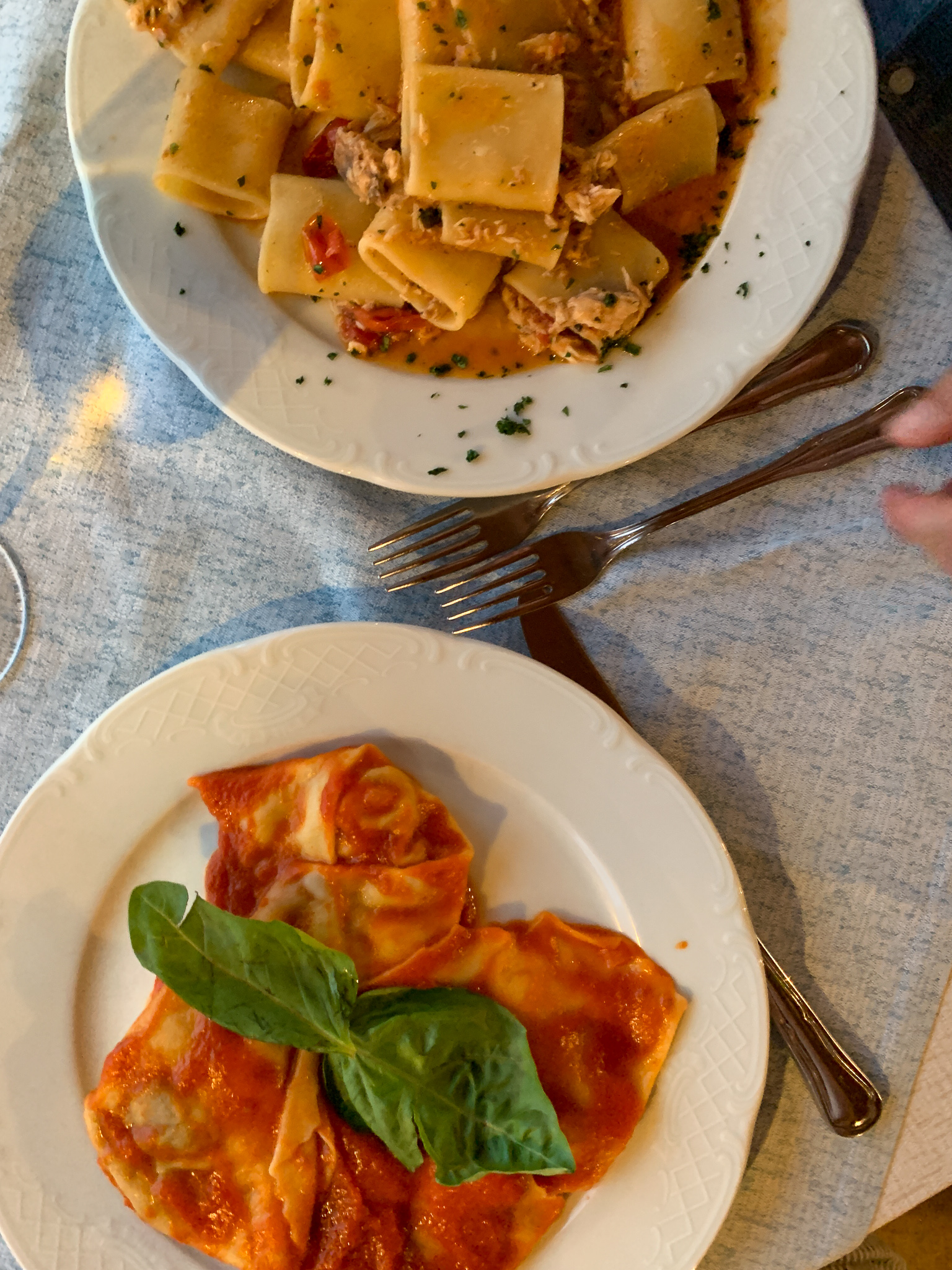



Tonino La Conchiglia is the only restaurant on Chiaia beach, and can be reached by a long staircase down the cliff-face, or via a boat shuttle from Coricella harbor. We loved the experience of taking the small boat there and back, and the unspoiled sea views from the restaurant’s perch on the beach.

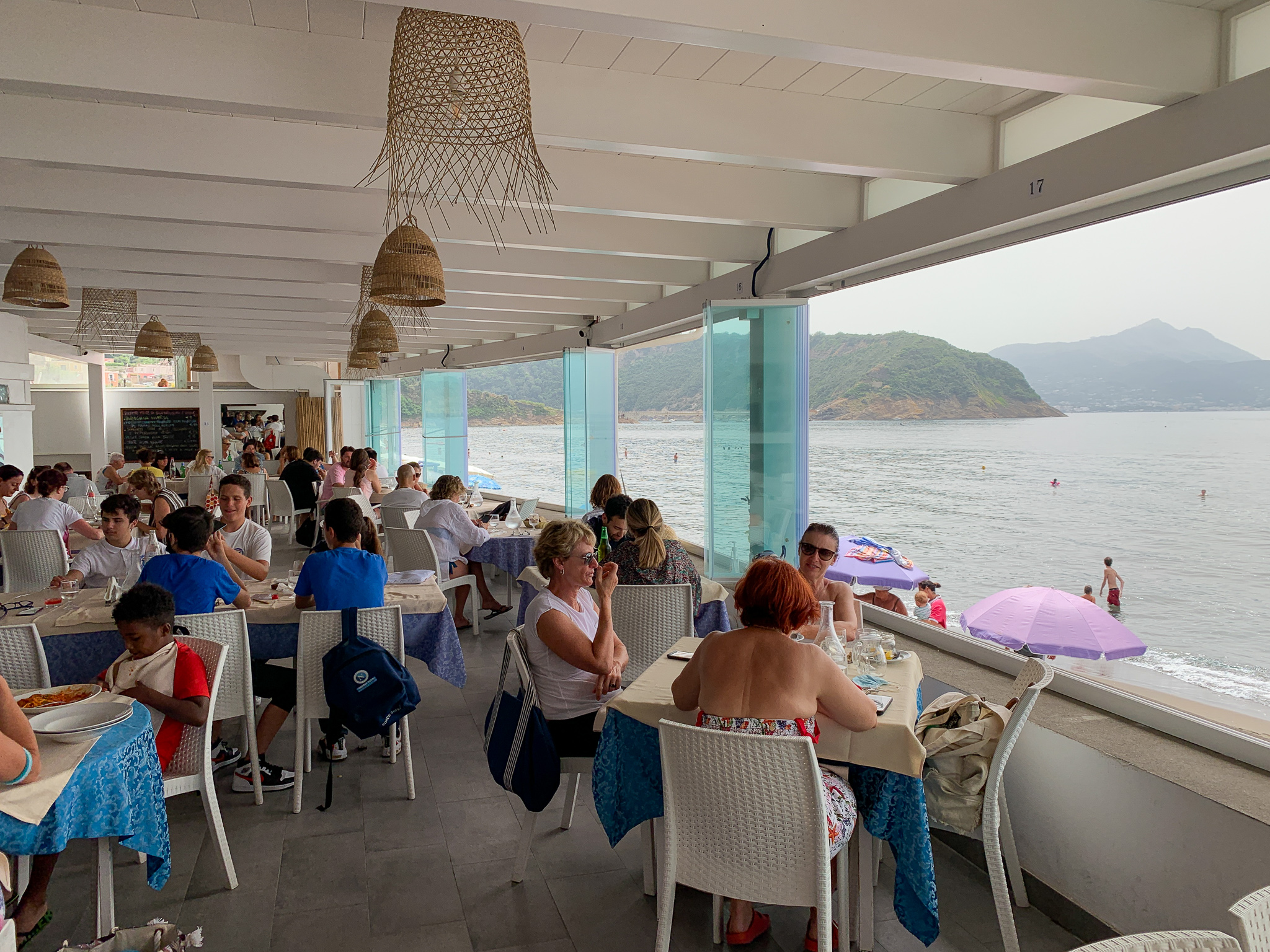
The day we rented bikes, Da Girone on Chiaiolella beach was our lunch destination, and it did not disappoint. One of many beach-side dining options, Da Girone had the most amazing lemon salad. A simple dish made with chunks of the local lemons (peel and pith included), olive oil, mint and chili flakes, it’s a dish we continue to dream about.


For breakfast and pastries we liked Bar Dal Cavaliere, very close to the ferry dock. They are known for their local speciality lingue di bue pastry (Italian for ox tongue) made with a sweet lemon cream. They have ample seating out front and it’s a nice place to linger with a cappuccino.


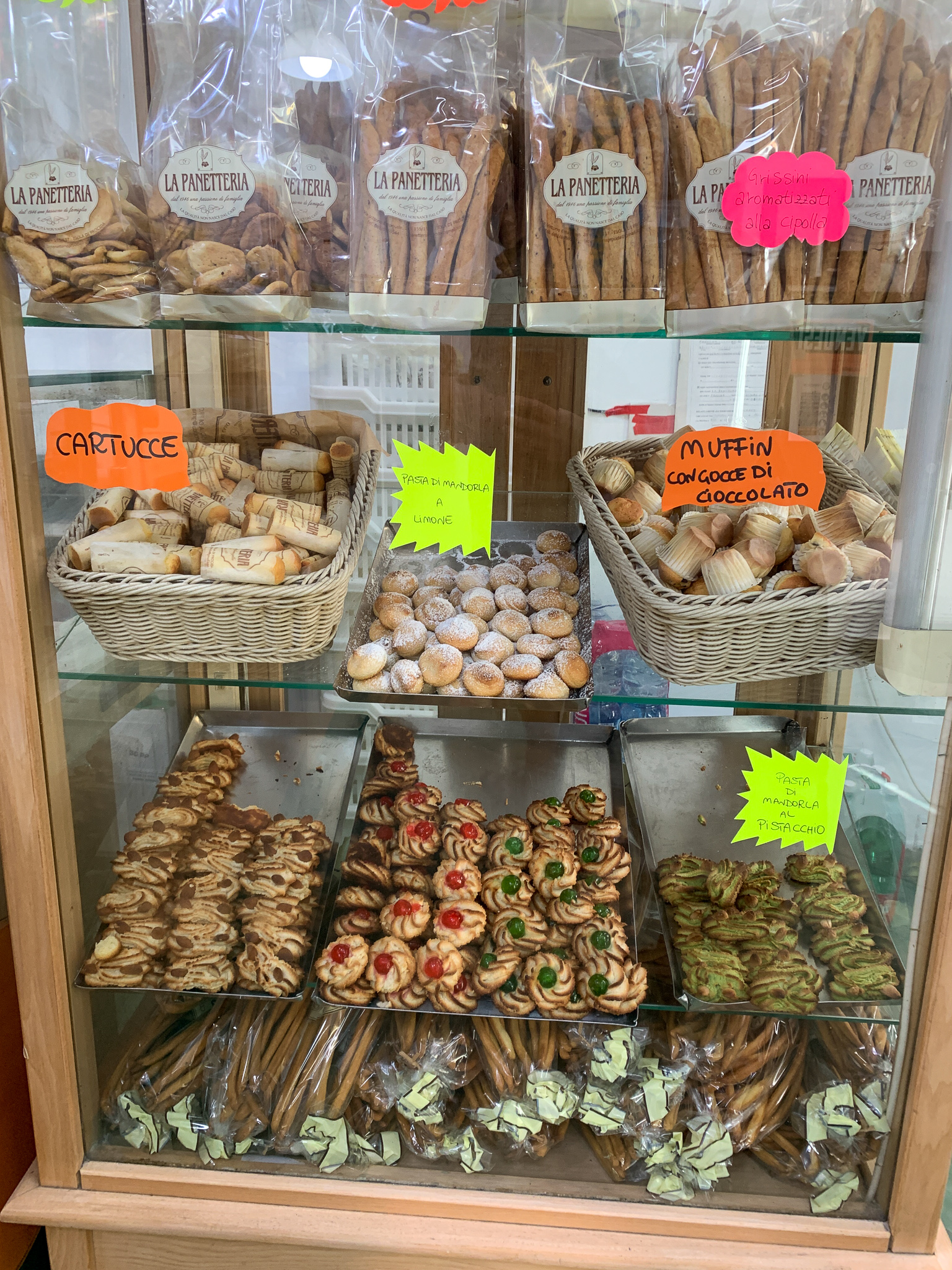
For pastries, cookies, and bread to-go, La Panetteria has a great selection. They’re located between the ferry dock and Chiaia beach, but walkable from both.
Where to Stay

Procida doesn’t boast large hotels like the neighboring islands of Ischia or Capri. There are a handful of smaller, more boutique-style properties available, however we chose to stay in an apartment rental in the little port of Coricella. There were pros and cons to the location we chose. We loved staying right on the harbor – we had a fantastic view and were able to watch the comings and goings of the fishing boats from our balcony. There are several great restaurants and places for an aperitivo right in the harbor. With that said, the harbor itself can only be reached on foot or by a water taxi. If traveling on foot, there is a long series of steps to reach the harbor from the nearest road above. Luckily we were traveling light and were able to negotiate the steps to get to our apartment, but this is something to consider when booking lodging. It also meant that any time we wanted to explore another part of the island or go to the beach, we had to climb the steps each time. For us it wasn’t a burden, but it could be a deterrent to others.
Getting There & Away
Procida can be reached by ferry from either Naples or Ischia. We took a Caremar ferry from Naples’s Molo Beverello port which took about 40 minutes to reach Procida. SNAV also offers ferries on this route. Ferries come into the port on the north side of the island and from there we walked the 15 minutes to Corricella.

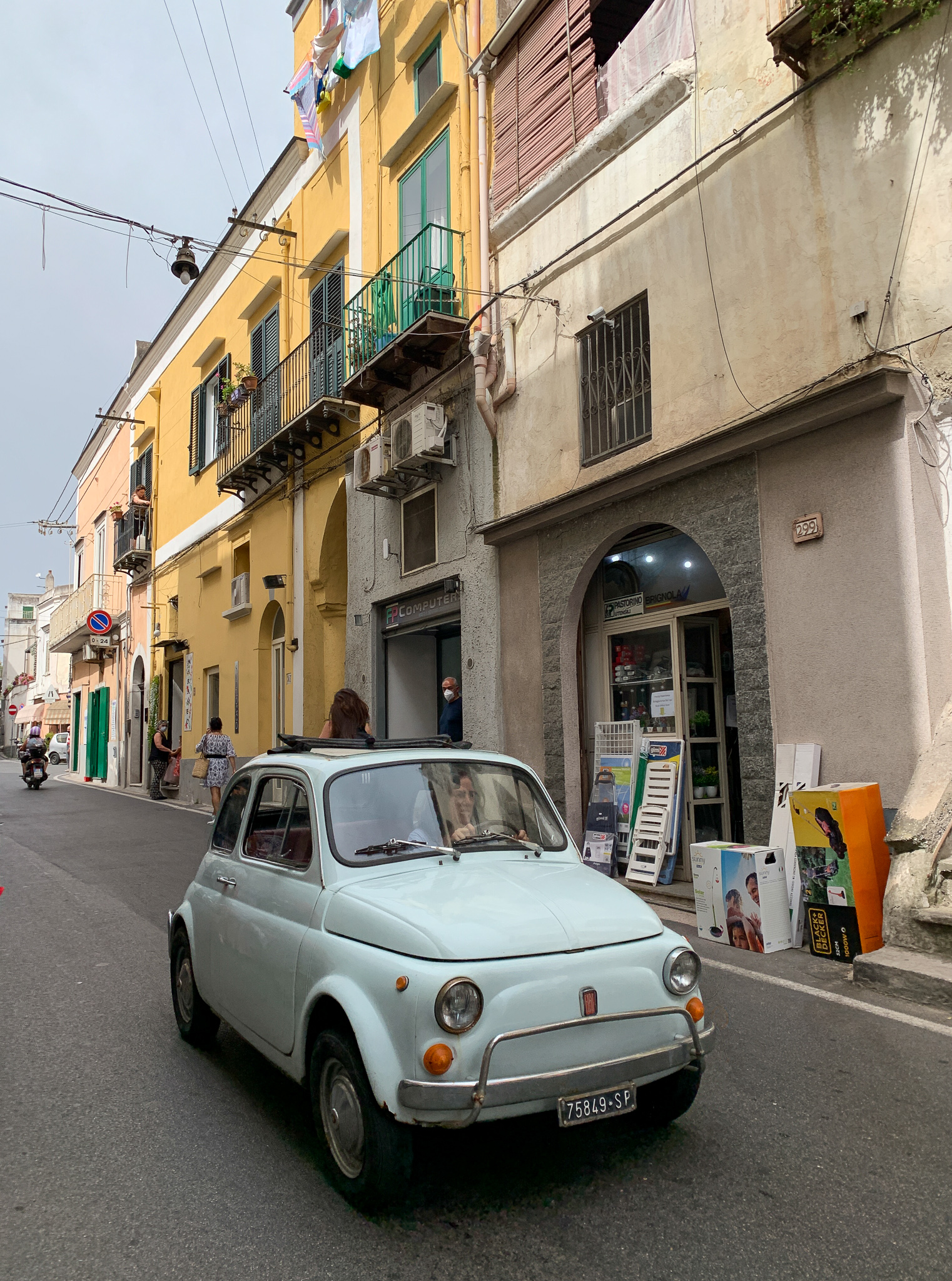

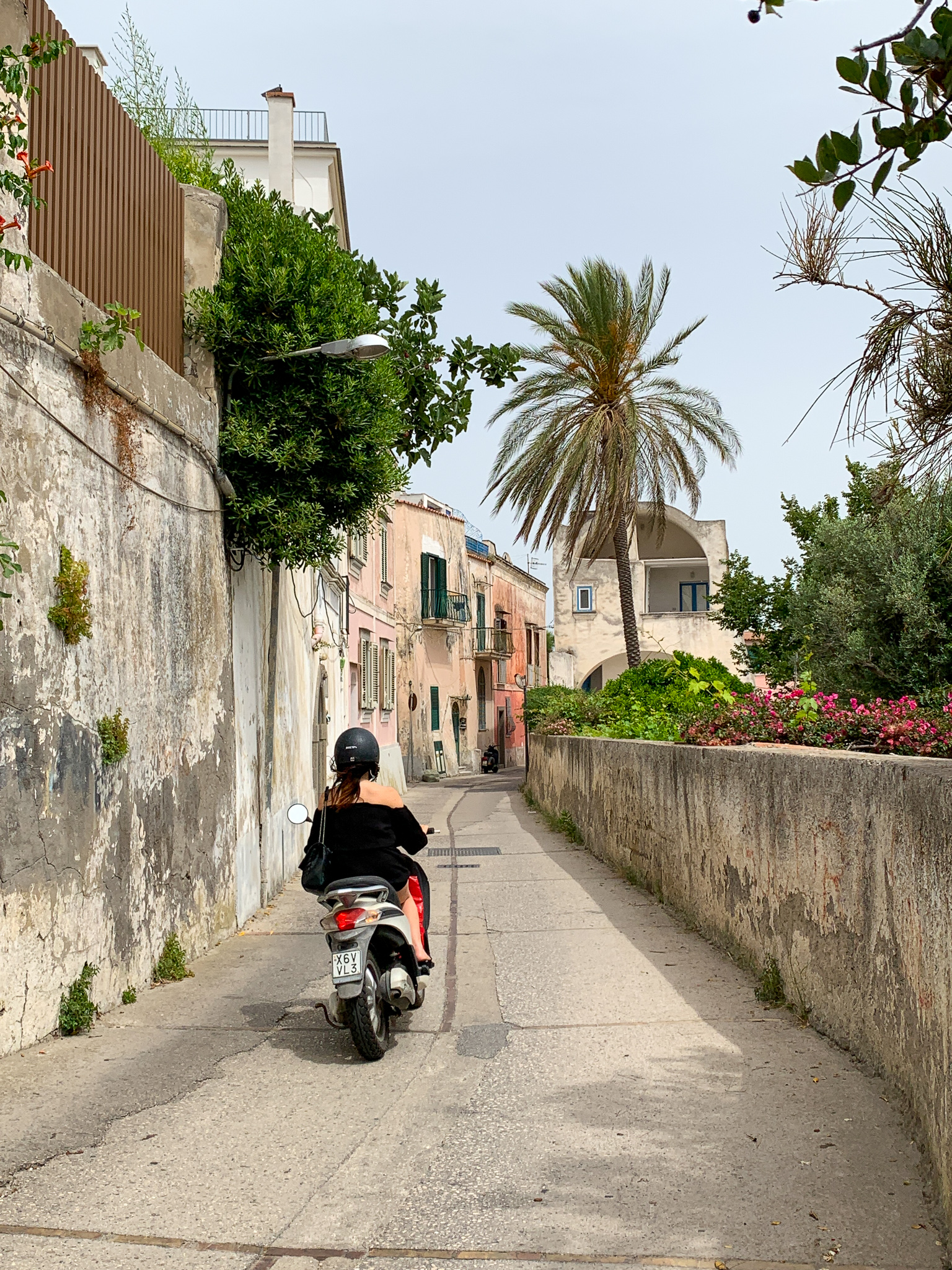


Part of the joy of visiting Procida is being able to just be. There’s not an endless list of historic sights to see or museums to visit, but it has its own distinctive culture and beauty and we found ourselves quickly settling into a slower pace of life. Days revolved around good food, long walks (or bike rides), a bit of exploration, time at the beach, and just watching local life go on around us. This little gem of an island provided a wonderful place to relax and enjoy some of the best parts of an Italian summer.
